Key takeaways:
- Elixir is a dynamic, functional programming language designed for scalable applications, running on the Erlang VM for fault tolerance and concurrent systems.
- Key features include a powerful concurrency model, immutable data structures that prevent race conditions, and metaprogramming capabilities for maintainable code.
- The Elixir community is supportive and collaborative, enhancing the learning experience through shared knowledge and resources.
- Challenges include adapting to new syntax, understanding concurrency, and navigating the fast-evolving ecosystem of libraries and tools.
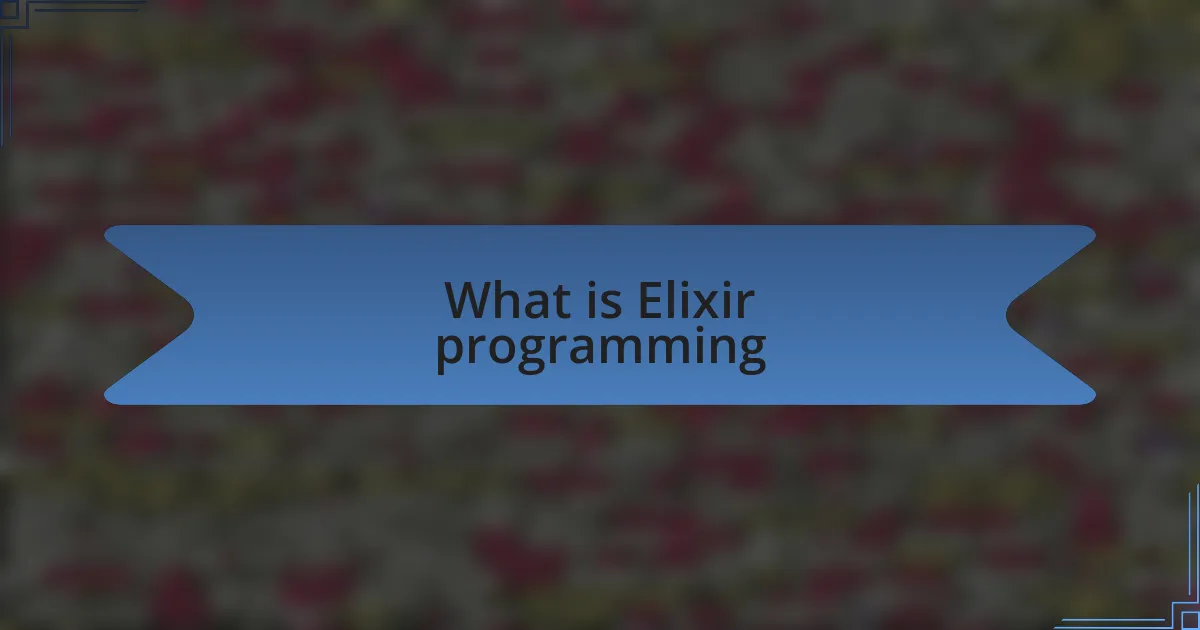
What is Elixir programming
Elixir is a dynamic, functional programming language designed for building scalable and maintainable applications, particularly in the realm of concurrent systems. It runs on the Erlang Virtual Machine (BEAM), which allows developers to leverage the power of fault tolerance and distributed computing. I remember when I first stumbled upon Elixir’s capabilities—my mind was blown by how it tackled problems that were daunting in other languages.
What sets Elixir apart is its ability to handle numerous users simultaneously without sacrificing performance. This property is crucial for applications that expect a high number of interactions—like messaging systems. I recall a project where we switched to Elixir mid-development because we needed that scalability; the transition felt like a breath of fresh air, as it simplified complexity while enhancing our app’s responsiveness.
Moreover, Elixir embraces a philosophy that prioritizes developer happiness and productivity, with its clear syntax and powerful abstractions. Learning its conventions felt intuitive to me, and it allowed me to focus more on solving problems rather than wrestling with the language. Have you ever picked up a language and felt as if it just clicked? That’s exactly how I felt with Elixir, which made my programming journey even more enjoyable.

Key features of Elixir
Elixir’s concurrency model is one of its standout features, enabling developers to build applications capable of handling thousands of tasks simultaneously. The underlying mechanism relies on lightweight processes that are managed by the BEAM VM, offering a level of performance that’s often hard to find in other languages. I remember the first time I created a simple chat application with Elixir; it was exhilarating to see how effortlessly it managed multiple users chatting in real-time without a hitch.
Another key aspect is Elixir’s use of immutable data structures. This might sound technical, but it eliminates the common pitfalls of shared state and race conditions that can complicate multi-threaded programming. When I first worked with immutability in Elixir, it felt like a revelation. The way it changed my approach to coding, making me think differently about how data flows, was not just enlightening but almost liberating.
Additionally, Elixir boasts fantastic support for building maintainable applications through its use of metaprogramming and the powerful macro system. This allows developers to create more expressive and reusable code. I still recall the moment I wrote my first macro—it opened up a whole new level of creativity in my work. Have you ever experienced that spark of inspiration when unlocking new capabilities? That’s precisely what Elixir’s flexibility brings to the table, empowering you to shape your code in ways that feel truly personal.
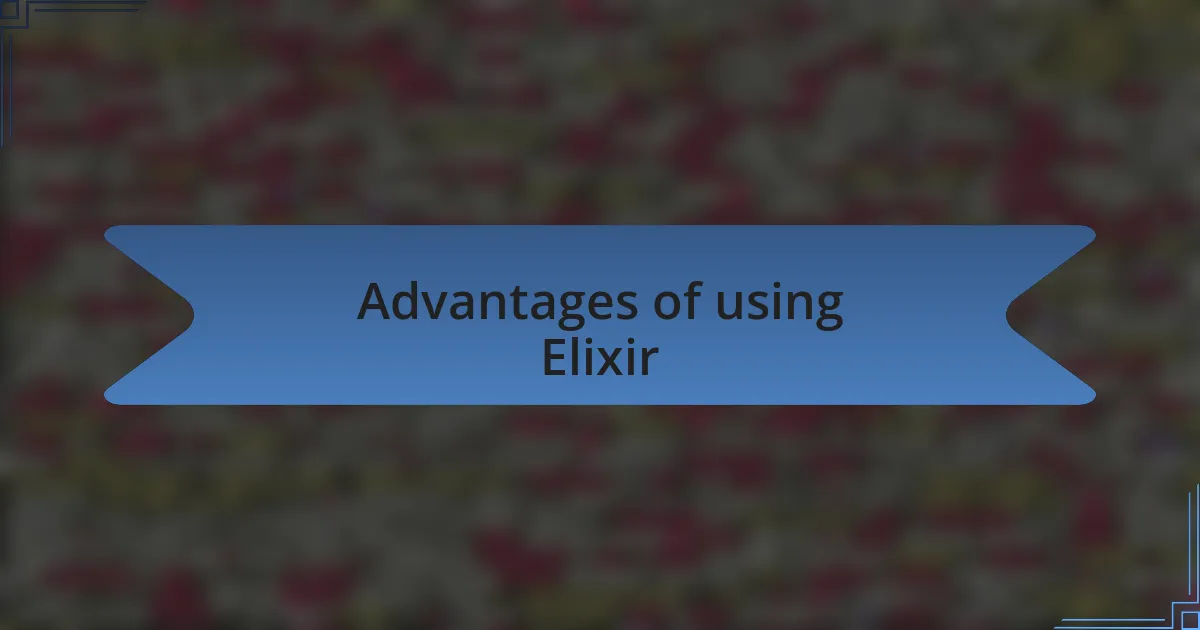
Advantages of using Elixir
Elixir’s scalability is a tremendous advantage that I often reflect on from my experiences. During a project that required rapid growth, I was amazed at how effortlessly I could scale my application. With Elixir, it’s almost like having a magic wand for scaling—multiplying resources to manage increased loads without sacrificing performance feels incredibly empowering. Have you ever found yourself apprehensive about scaling? With Elixir, those worries fade away.
Another standout benefit is the community surrounding Elixir. From the beginning, I found myself immersed in a culture of sharing knowledge and supporting one another. It’s invigorating to work in an environment where developers freely exchange ideas and solutions. Each time I attended a meet-up, I walked away not just with technical insights, but also with a sense of belonging. Isn’t it refreshing to be part of such a vibrant and collaborative community?
Lastly, the fault tolerance built into Elixir applications is something that continually impresses me. I remember when I encountered unexpected errors in a live environment; instead of panicking, I took comfort in Elixir’s supervision trees that gracefully handled failures. This feature not only instills confidence in my coding but also encourages an innovation mindset since I know I can experiment without the fear of total system collapse. Don’t you think that the ability to build resilient applications makes a significant difference in how we approach problem-solving?
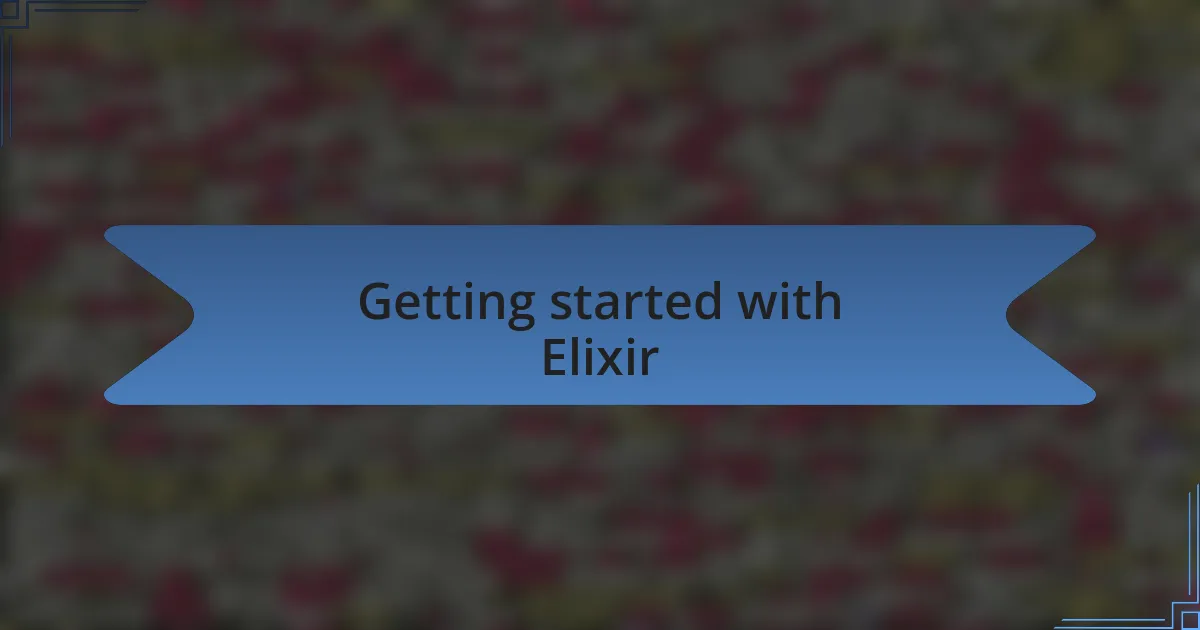
Getting started with Elixir
Getting started with Elixir can feel a bit daunting at first, especially if you’re used to other programming languages. I vividly recall installing Elixir for the first time, and the sense of accomplishment when I ran my first “Hello, World!” application. The straightforward installation process and the clear documentation made it easy to dive in. Have you ever felt that rush of excitement when you see your code come to life?
Once you’re set up, familiarizing yourself with the interactive shell, known as IEx, can truly enhance your experience. I remember spending hours just experimenting with functions, seeing immediate results. It’s such a powerful tool for learning and testing out concepts without the boilerplate code that often comes with larger applications. Isn’t it fascinating how a simple shell can transform the way we interact with code?
As I progressed, I found that building simple projects, like a personal to-do list, made the learning curve much more manageable. Each new feature I added gave me insights into functional programming paradigms that Elixir embraces. The joy I felt when my to-do list app successfully managed tasks was indescribable. Don’t you think hands-on projects are the best way to truly understand a language?
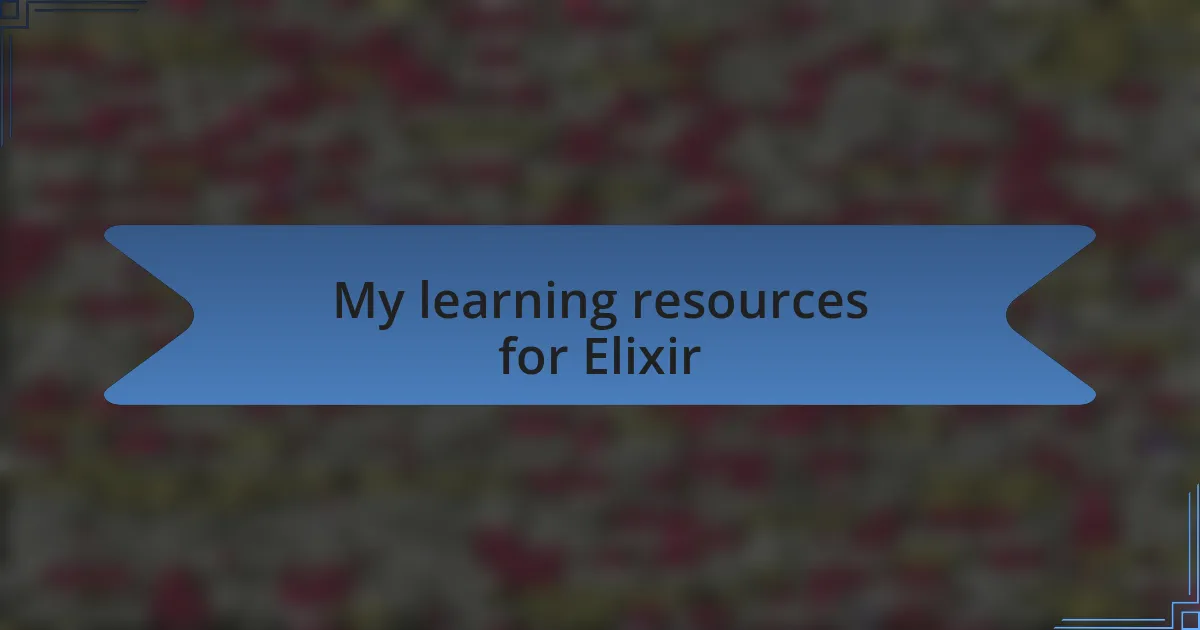
My learning resources for Elixir
In my journey to learn Elixir, I relied heavily on a combination of online courses and books. One standout resource was “Programming Elixir” by Dave Thomas, which broke down complex concepts into digestible chunks. I can distinctly remember those moments of clarity when I grasped functional programming principles, feeling like I was finally unlocking a new way of thinking about code. Have you ever had a moment where everything just clicks?
I also found the Elixir School website to be an invaluable resource. Their curated tutorials and guides helped me bridge gaps in my knowledge. I vividly recall the satisfaction I felt when completing each lesson, almost like ticking off a bucket list item. With each tutorial, I could almost visualize myself mastering an entirely new mind-set in programming.
Community forums, such as the Elixir Forum and Stack Overflow, played a significant role in my learning process. I vividly recall posting my first question about pattern matching and receiving helpful responses that not only solved my problem but taught me different perspectives on tackling similar issues. It’s incredible how engaging with a community can enrich your learning experience, don’t you think?
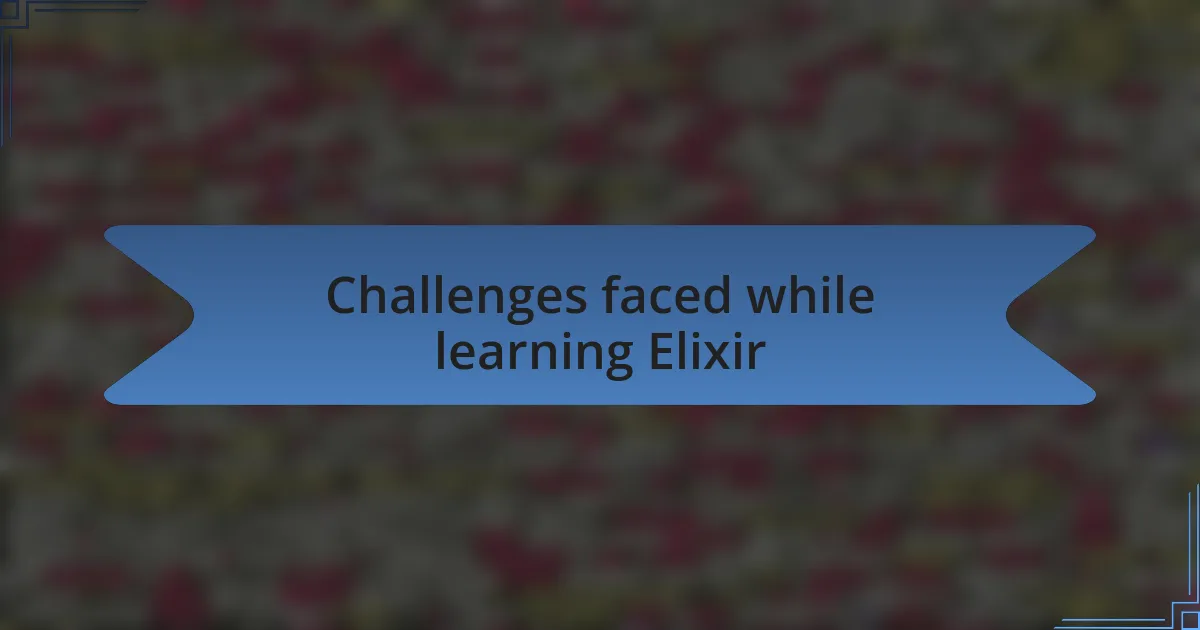
Challenges faced while learning Elixir
Diving into Elixir’s syntax was a bit like learning a new language for me. I remember staring at my first function definition, feeling overwhelmed by all the unfamiliar symbols and structures. Have you ever struggled to make sense of something that seems so simple to others? It took time for me to appreciate the elegance of immutability and higher-order functions, and I often found myself frustrated when my code didn’t behave as I expected.
Another challenge that stood out was grasping the concept of concurrency. In other languages, I was accustomed to a more linear approach to problem-solving. I can still hear the moment when I first attempted to implement processes and tasks using the Actor model. It felt like juggling while riding a unicycle! The mental shift required to think in terms of lightweight processes instead of threads was daunting, but gradually, it led to some of those exhilarating “aha!” moments that made it all worthwhile.
Lastly, there were times when the Elixir ecosystem felt overwhelming due to its rapid evolution and the plethora of libraries available. I vividly recall the frustration of trying to choose between several tools for building APIs. I kept asking myself, “Which one should I pick?” Ultimately, engaging with the community and exploring their recommendations helped me navigate these decisions, turning those initial moments of doubt into opportunities for growth and exploration. Isn’t that part of the journey?